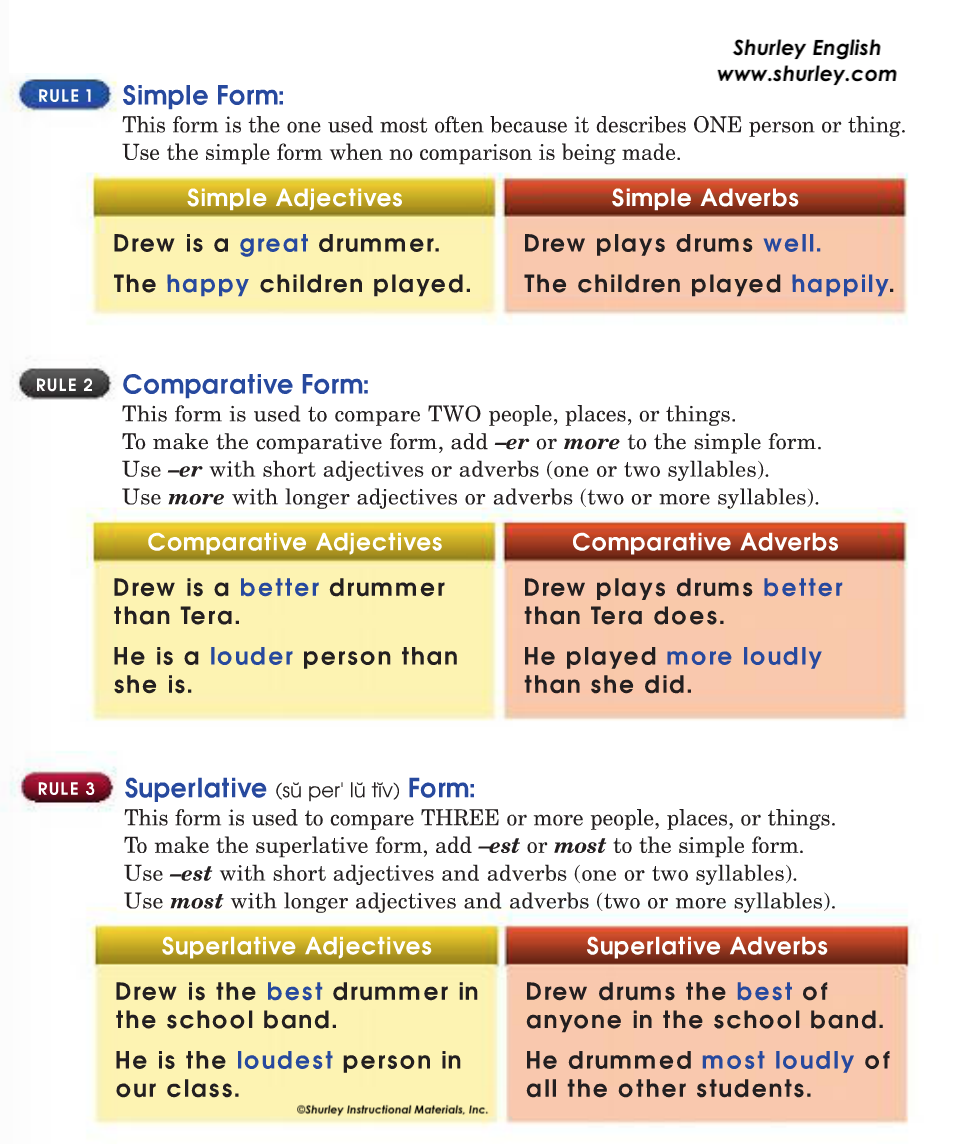Understanding Degrees of Comparison
/At first glance, teaching the Degrees of Adjectives and Adverbs may seem trite, but after personally hearing numerous adults use this concept incorrectly, I feel it’s worth addressing to ensure the communication success of our young learners. Here is a great reference for you to use during your lesson:
I have to admit that I cringe when I hear people use double comparisons such as, “more better” or “most wealthiest,” especially when it’s uttered from a schooled adult. Here’s another Shurley Reference to save the day!
When teaching Degrees of Comparison, pay close attention to irregular adjectives and adverbs, along with these valuable References and Student Tips found in your Teacher’s Manual. After teaching these concepts to your students or refreshing your own memory, remember to apply them in your own verbal and written communication...never forget that YOU are always a model for your students!
This concept has been taught to students in the Shurley English Curriculum since Level 3, which is consistent with my experience teaching from other publisher’s Language Arts curricula in 3rd-5th grade…so why is such a simple concept still being used incorrectly among adults? I’m not claiming to know the answer, but I believe it might have something to do with teacher instruction, modeling, and application & accountability. Allow me to show you how Shurley English can help clean up this mess.
You’ve probably used various comparison activities using physical objects to illustrate this concept. If so, EXCELLENT! If not, here’s a simple activity to consider. Others can also be found in your Teacher’s Manual.
For example: Show students a golf ball and other larger sized sports balls and have students repeat after you.
One. Simple. The golf ball is small.
Two. Comparative. The golf ball is smaller than the baseball.
Three or more. Superlative. The golf ball is the smallest ball here.







































































































